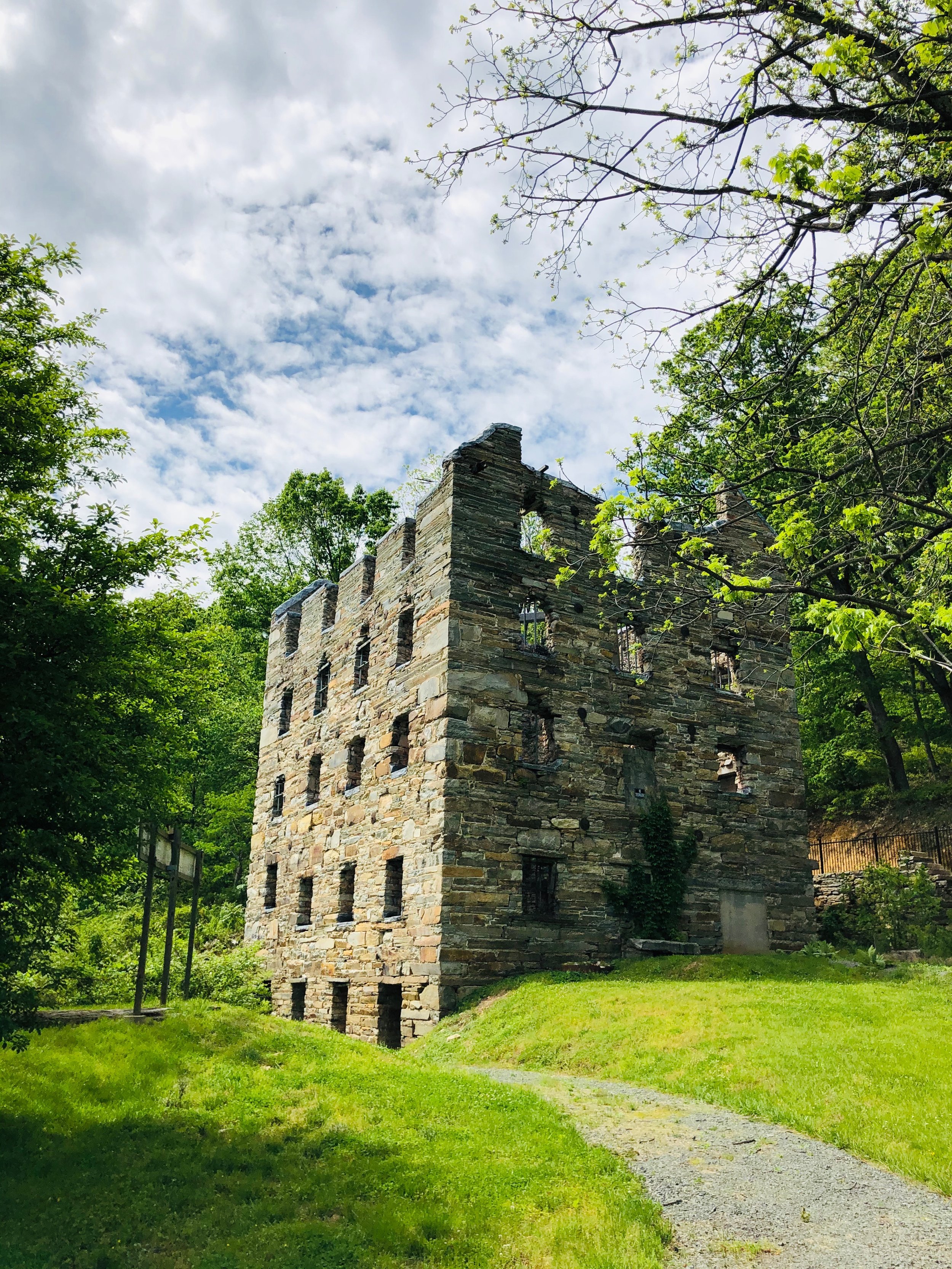
Chapman-Beverley Mill history
A Virginian Landmark since 1742
Established as a grist mill in the middle of the 18th century, the Chapman-Beverley Mill is one of the earliest known industrial sites in Virginia. The Mill remains an important landmark to this day, straddling the original demarcation between Fauquier and Prince William counties.
The Thoroughfare Gap
A narrow passage between Bull Run and Pond Mountains, the Thoroughfare Gap was used by migrating buffalo and traveling Indigenous peoples long before it became a major transportation corridor for wheat and goods in the 18th century. Mention of the Gap was first recorded in 1697 by a group of Maryland colonists searching for a band of Piscataway Indians. Later, Tidewater planters used the Gap as a route to the rich Shenandoah Valley.
During wartime its use became even more strategic: it was an escape route during the French and Indian War, during the Revolutionary War it was the route east to join the army, and during the Civil War, it was a strategic passageway for both armies. At the time of the Spanish-American War in 1898, 10,000 American troops were stationed at the Gap to avoid a typhoid epidemic in Camp Alger near Falls Church.
For many years, the Gap has been a major east-west thoroughfare. Today, Interstate 66 takes thousands of people east and west in their travels, many commuting to the Washington, DC area to work. These travelers are able to see the charred walls of the mill. Hopefully, in the future they will be able to stop, safely explore the stabilized ruins and learn more about the mill and the surrounding area.
Chapman’s Mill
Chapman’s Mill was built in 1742 by Jonathan and Nathaniel Chapman, a father/son partnership from an enterprising, well-connected colonial family. Enlarged in 1758, the mill became a prosperous gristmill that fostered the development of the Shenandoah Valley as a wheat and corn producing region for the next one hundred years. Due to the mill’s location between the Valley and the city of Alexandria, corn and wheat could be transported efficiently by wagon to the mill, ground into cornmeal and wheat, and then shipped from Alexandria to ever-expanding markets in Europe and South America.
In 1759, Fauquier County was created from old Prince William County, and the related documents noted that the boundary between the two counties passed through the mill, as it does today. The prosperity of the mill was enhanced in 1852 when the Manassas Gap Railroad was completed, passing beside the mill and reducing the travel time to Alexandria. In 1858, the Chapman’s enlarged the mill, raising it to a total of seven stories and making it a model of agricultural technology.
The Mill and the Civil War
By July of 1861, Confederates had turned Chapman’s Mill into a meat curing warehouse and distribution center. Herds of cattle and pigs were enclosed in large pens, and more than two million pounds of Confederate meat were stored on the site. Confederates, leaving after the First Battle of Manassas, burned the meat and the mill to keep them from the advancing troops.
On August 28, 1862 Union General Ricketts was ordered to occupy Thoroughfare Gap to prevent Generals Lee and Longstreet from marching through the Gap and joining Confederate troops gathering for the Second Battle of Manassas. Historians say that if Ricketts had prevailed at the Battle of Thoroughfare Gap, which took place in and around the mill, the Second Battle of Manassas would never have taken place.
During much of the Civil War, Col. John S. Mosby and his Raiders traversed Thoroughfare Gap as they sought to disrupt the movement of Union provisions to their armies in the South.
From Beverley to Chrysler
By 1876, the Beverley family had restored the ruins to a very successful milling operation and the mill took on their name. During the Beverley’s ownership, the mill produced plaster, cornmeal and feed. In 1896, the business was sold to Hornbaker and Wolverton who added facilities for grinding flour. They sold to William Jordan in 1901 who, in turn, sold to Charles Furr, Jr. in 1903.
Under Furr, the mill gained modern flour milling equipment and a Fairbanks Morse diesel engine which could be used to power the operation during dry spells. The Furr family also oversaw the building of a small mill store circa 1934 from which meal and gasoline could be sold. Unfortunately, the improvements that the Furr’s made resulted in financial difficulties which led to the family selling the business to Walter Chrysler in 1946. Chrysler installed electric equipment, but never actually operated the mill due to an inability to comply with FDA regulations.
By the time Chapman’s Mill ceased to operate in 1946, it had ground cornmeal and flour for American troops during seven wars: The French and Indian, the Revolutionary, the War of 1812, the Civil War, the Spanish-American War, World War I and World War II.
The Mill in the 20th Century
Though its milling business had come to an end, the Mill Store continued to serve the Gap community as a convenience store and later a post office. By 1971, Chapman Mill was named to the National Register of Historic Places in recognition for its significant contribution to the agricultural and industrial development of northern Virginia.
In October of 1998, the Chapman-Beverley Mill fell victim to arson. Despite heroic efforts from local fire and rescue squads, the Mill’s wooden interior and original machinery were utterly consumed. To prevent the structure to collapse completely, fire fighters removed the Mill’s gable roof. In the weeks following the fire, community members rallied together to form a nonprofit that would obtain ownership of the property. The newly christened Turn the Mill Around Campaign began to stabilize the Mill’s remaining walls and to prepare the site for preservation.






